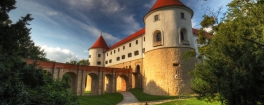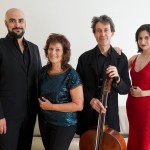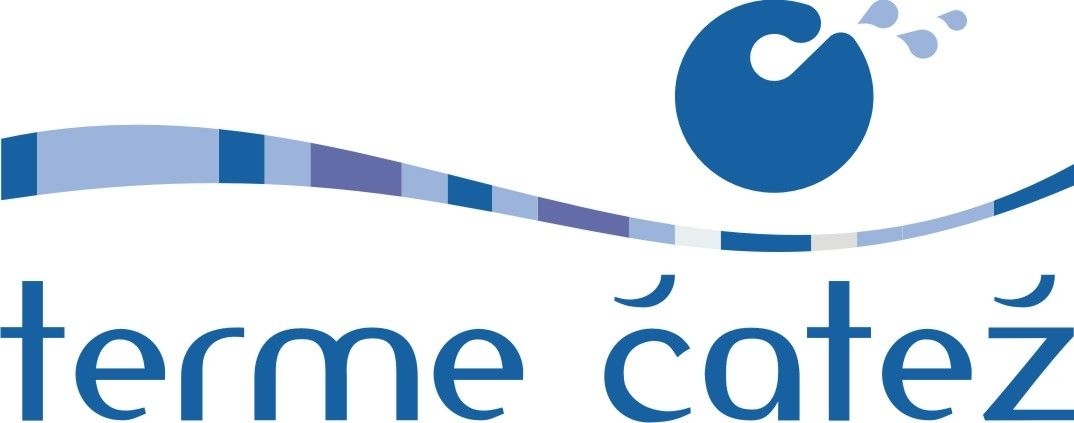Regina Iberica (ES)
A long trajectory in Spanish Baroque music, with singing and a focus on the most recent historical criteria is what characterizes Regina Ibérica, created in 1998 by Laura Casanova. In 2015 they recorded their third album 'The 12 Musicians of Iriarte' (Lindoro). It groups works of Spanish composers in the course of three centuries. Following the steps of the poem 'The Music' by Tomás de Iriarte, this record offers retrievals of unpublished works and the first recordings of published ones, as well as versions of known works in the world of Early Music.

Ticket order:
8-25 EUR
Access: transport Departure at 18:00 (Hala Tivoli)
Delia Agúndez (sopran / soprano)
Víctor Sordo (tenor)
Sara Ruiz (viola da gamba / viol)
Laura Casanova (čembalo / harpsichord)
About the concert programme
The programme includes unknown and rare pieces from the Spanish musical heritage, most of them profane. It is a type of music that was cultivated in the nobles’ houses, theatres, the Royal house, chapels, and the court, which until 1700 housed the Habsburg dynasty and later the Bourbons.
All musical pieces are written for one or two voices with basso continuo, which is an abbreviated formula of musical writing: the composer writes only the lines of the voices, and for the accompaniment only one pentagram that can be interpreted by several instruments, in our case the harpsichord and the violoncello, leaving much space for improvisation.
This year, 2016, is the 300th anniversary of the death of the Spanish composer Sebastián Durón (1600–1716), the pioneer of the Italian style in opera, which was to become popular after his time. The programme includes two of his pieces: one on a religious theme “Ay de mí, que el llanto y la tristeza” (“Alas, that crying and sadness”), which represents a constant in religious Spanish music, i.e. guilt that is unforgivable by God, who is felt as inflexible. The second theme is a fragment of an opera that Regina Iberica has recovered for our most recent record: “The twelve musicians of Iriarte” (2015), with its characteristic mythological figures.
The core of the programme groups comic or lighter pieces with comic themes, dialogues of popular characters distanced from nobility and from the feelings of mythological figures (love is paid by love, it is better paid by money). The characters used to be servants, estranged from epic feelings and eternal love.
Music from the Spanish Baroque plays with syncopation, alternation of beats, strong and abutted rhythms, popular forms such as couplets and refrains, while the texts also play with contrasts: “oh yes / oh no”, “I want to die / I want to live”, “to live is to die / to die is to live”, “ah sweet deceit, ah traitor praise”; there is much presence of the “ay” (“oh”) in both meanings: comic and filled with coquetry, or as a sign of profound grief.
We are confident that, despite the distance imposed by the language barrier, the musical pieces will touch the public because they reflect intense, vital contradictions: love as delicious torment and more important than death itself, or the vitality of coquetry. All presented with a sober music with few elements, stunning in its simplicity, powerful in its strength and passion, and touching in its tenderness.
Laura Casanova, direction and harpsichord
Event programme
Cristobal Morales (1500-1553)
Si no vos hubiera mirado
Sebastián Durón (1660-1716)
Su poder en sus armas
Recitativo (Júpiter) / Arieta (Cupido) / Dúo / Dúo
Sebastián Durón (1660-1716)
Ay de mí, que el llanto y la tristeza
Recitativo / Aria / Recitativo
Juan de Arañés (?-ca.1650)
Dígame un requiebro
Aria / Couplets
Torrejón y Velasco (1664-1728)
Cuando el bien que adoro
Aria / Couplets
J.Sergueira de Lima (c.1655-c.1726)
Mares, montes, vientos
Aria / Couplets
Anonymous (17. c.)
Es el amor, ay, ay
Juan Hidalgo (1614-1685)
Ay, que sí, ay, que no
Juan del Vado (ca.1625-1691)
Con amor se paga el amor
***Odmor***
Giuseppe Jacchini (1670-1727)
Sonata violoncello
Grave / Andante mosso / Adagio /Aria Presto
Anonymus (17. c.)
Ay, amargas soledades
Aria / Recitativo / Arieta / Recitativo / Arieta airosa
Antonio Literes (1673-1747)
Déjame llorar, ingrata
José de Nebra (1700-1752)
Ay, Dios aleve: Es el hijo del viento
Aria / Couplets / Aria
Mokrice, Mokrice Castle

Mokrice castle was first mentioned in 1444 , the basic features of the Renaissance castle Mokrice were given in the 16th century . The history of the castle is characterized by findings from the times of the Roman Empire and from the times of Turkish invasions. Grad Mokrice is located southeast of the village Catez ob Savi on the hill above the right bank of the Sava River, the etymology of its name refers to the once marshy, ie wet area in its surroundings.














